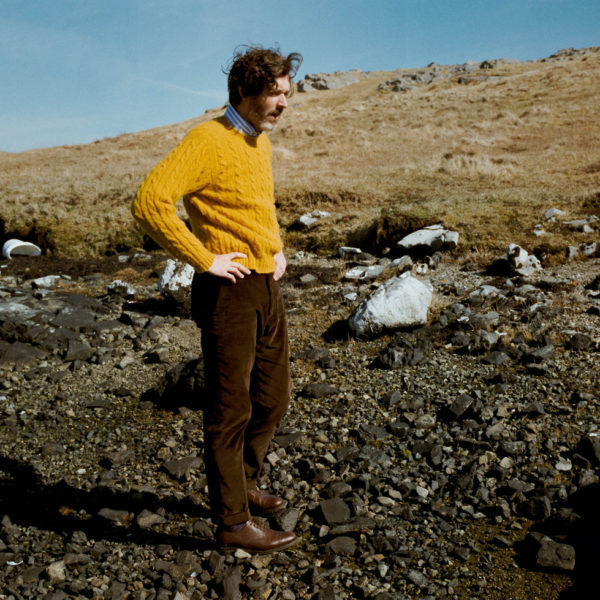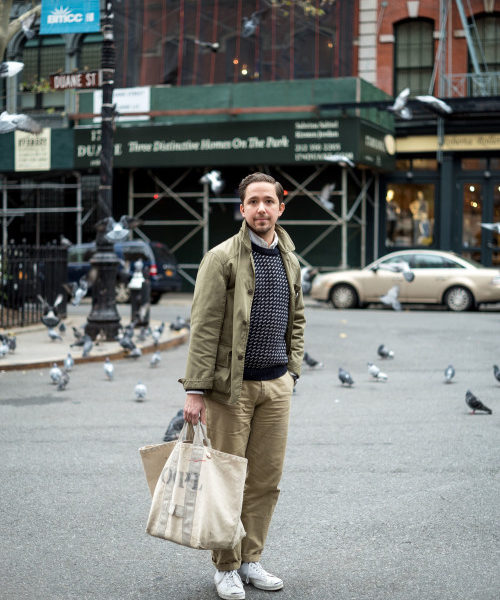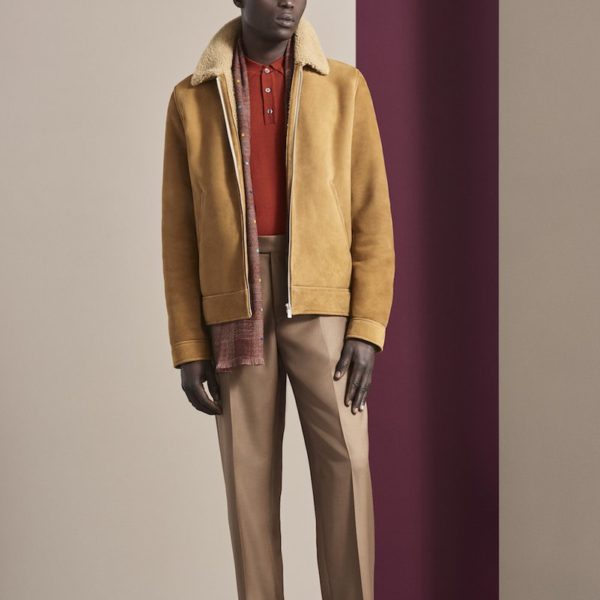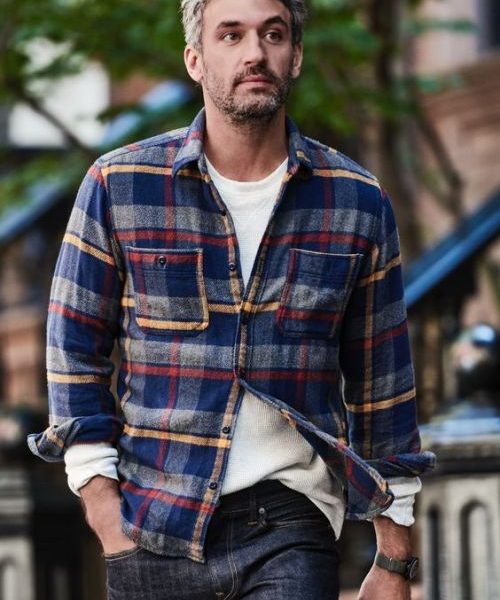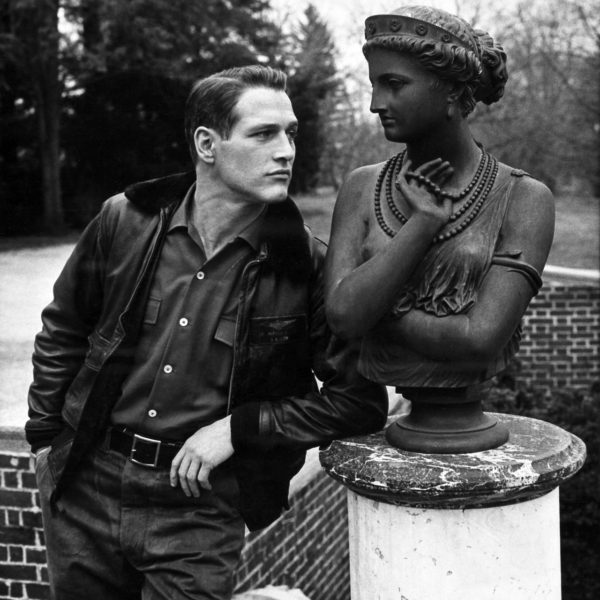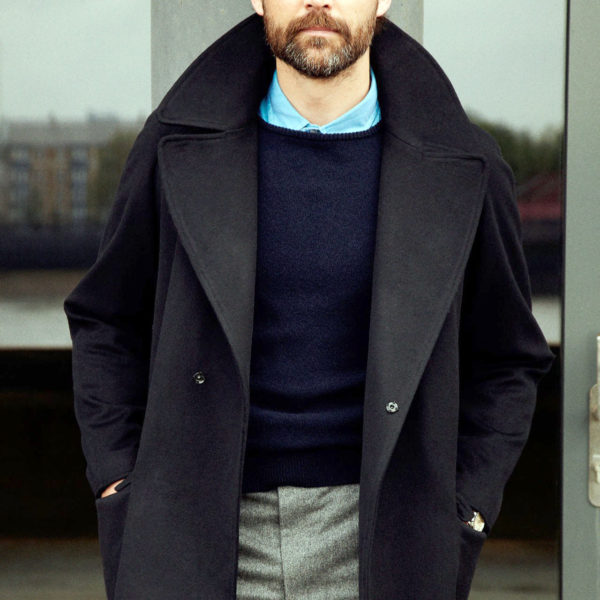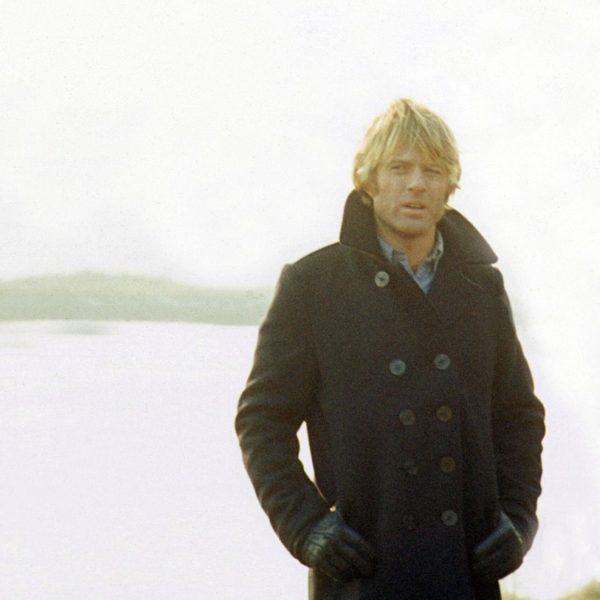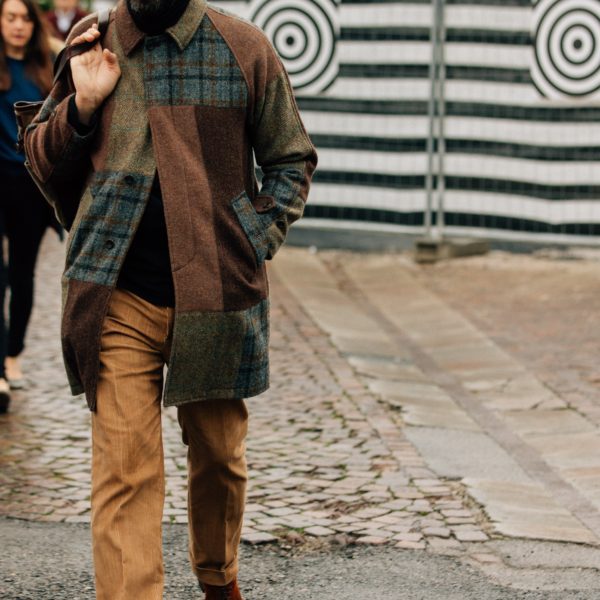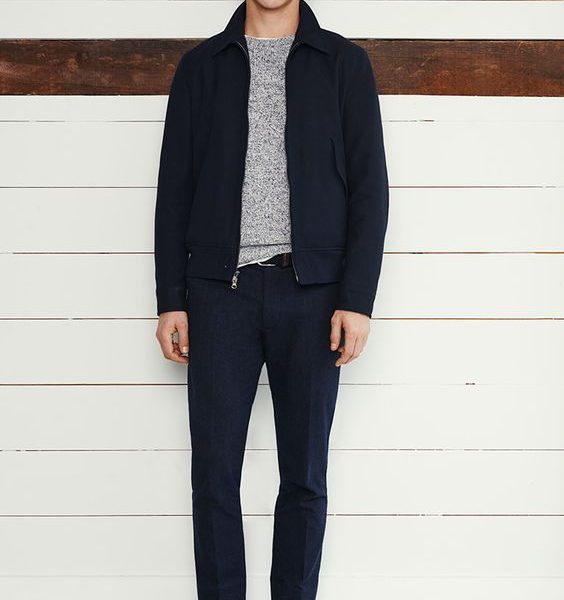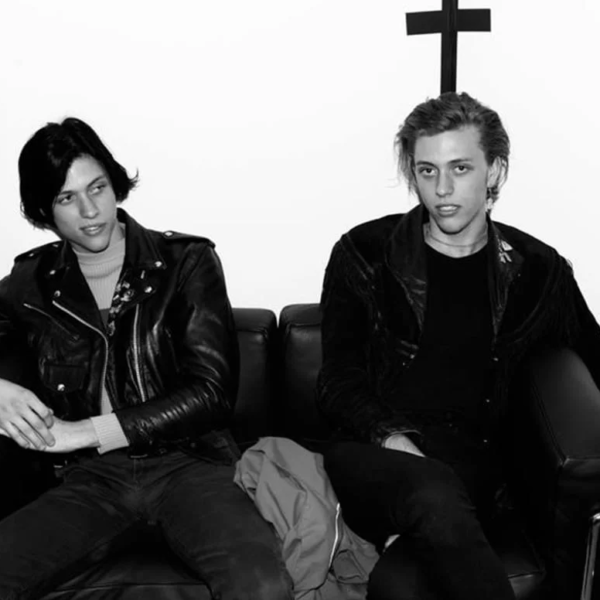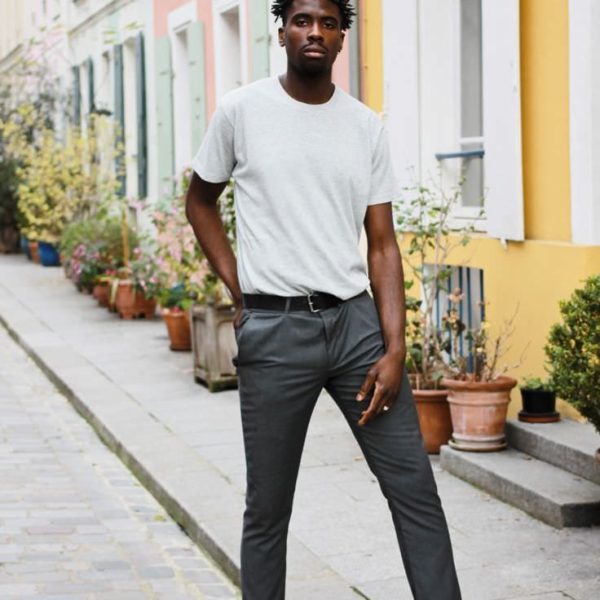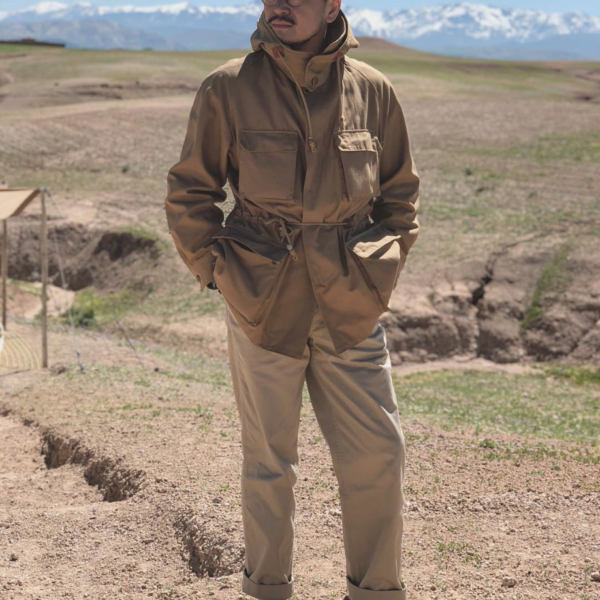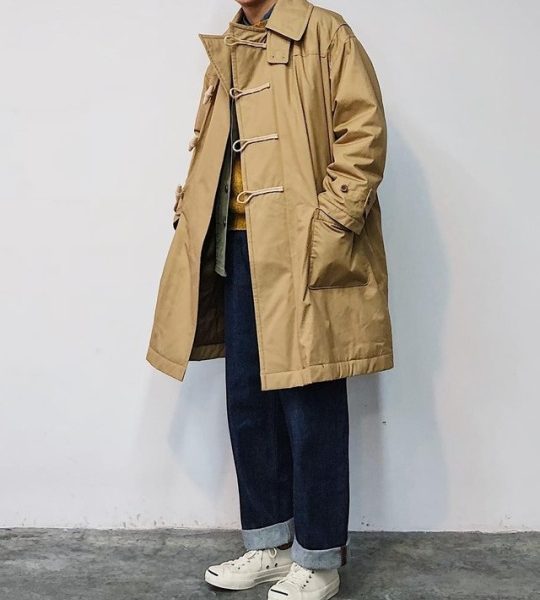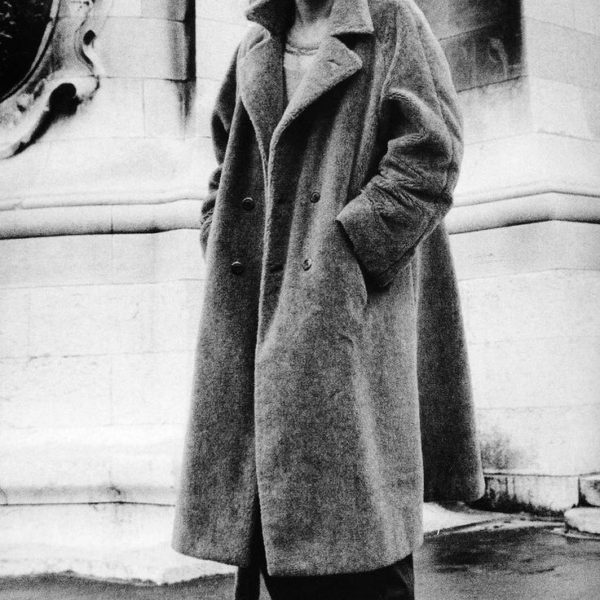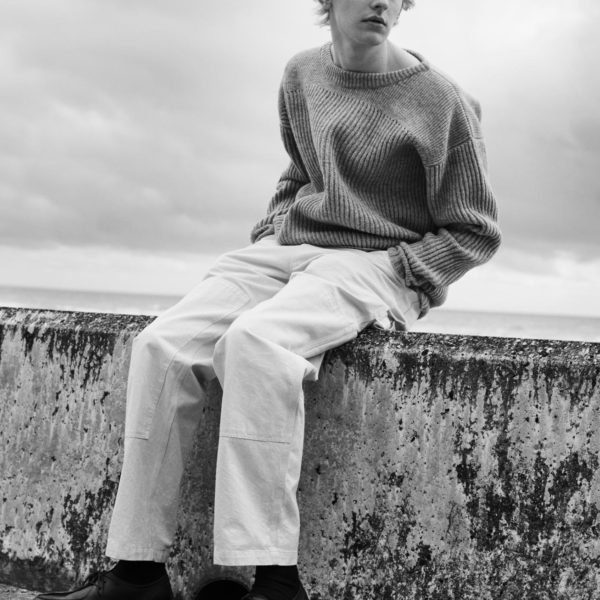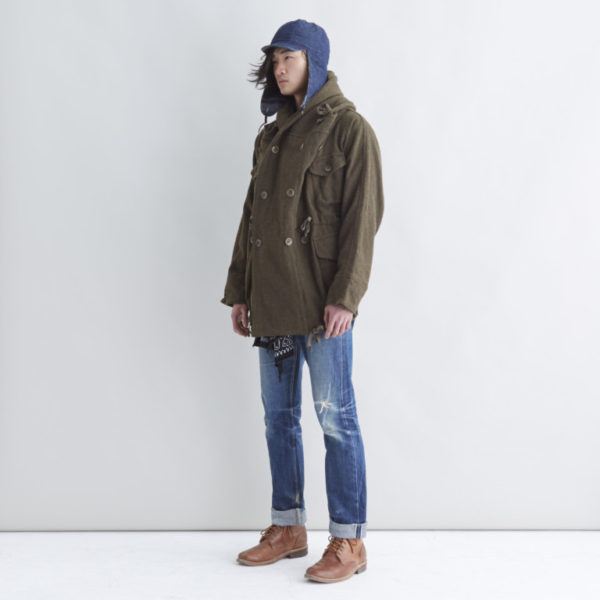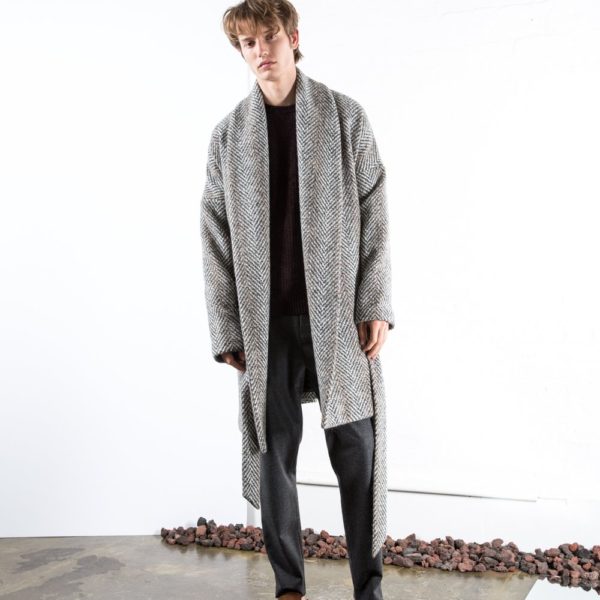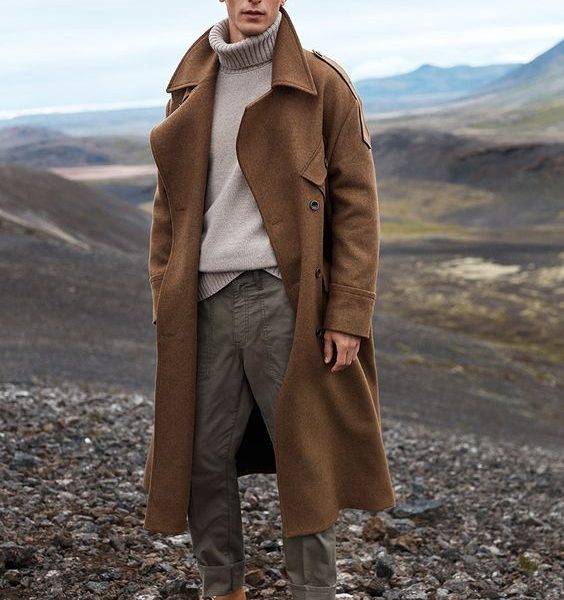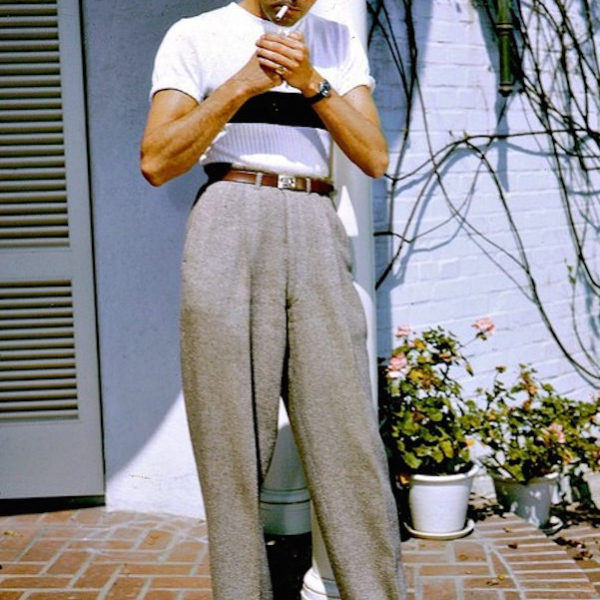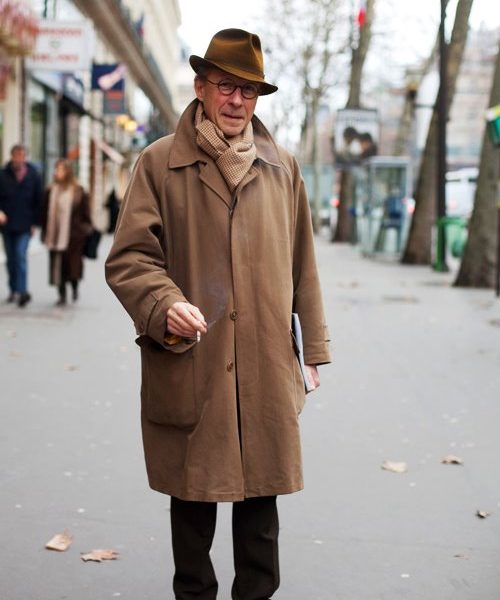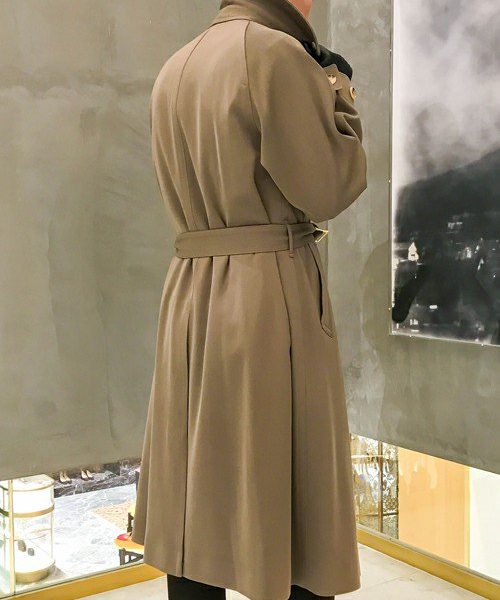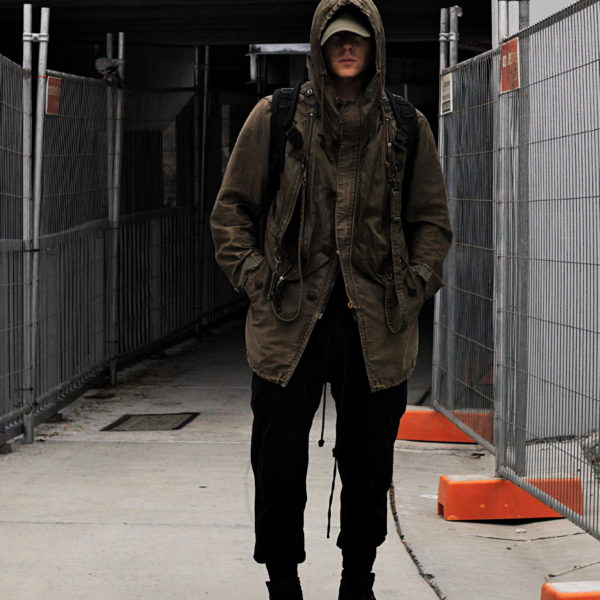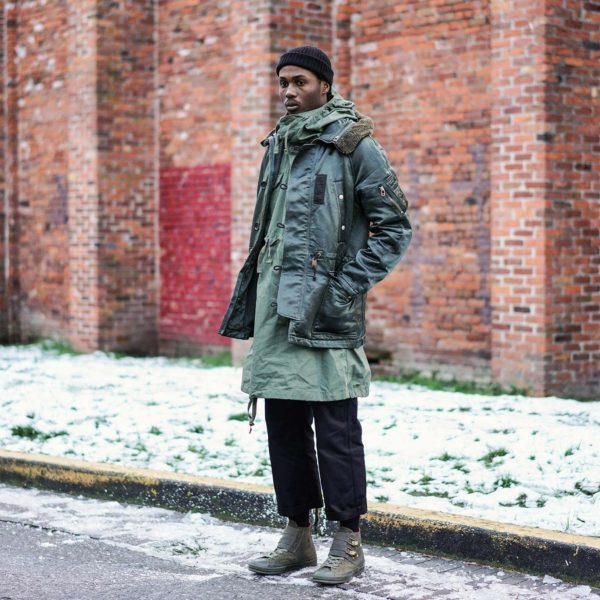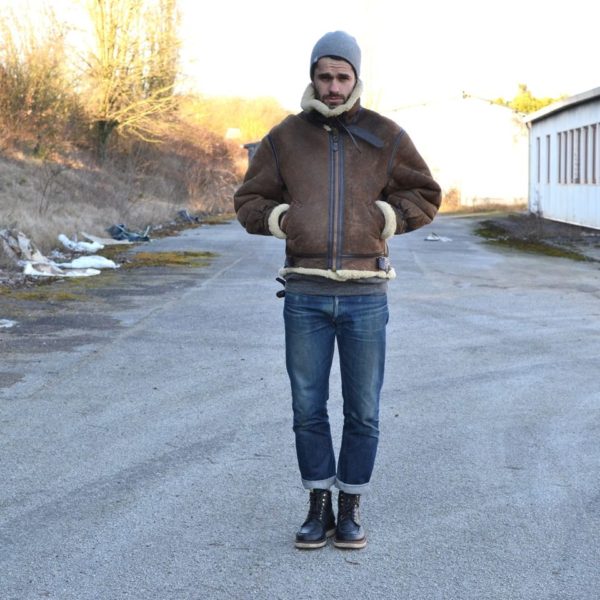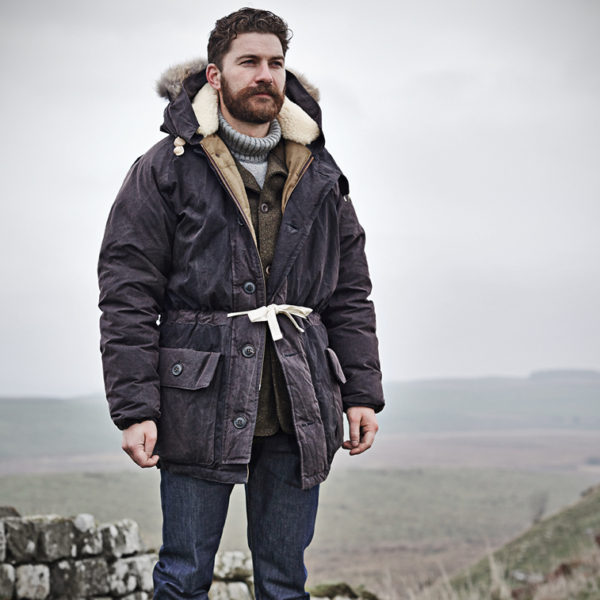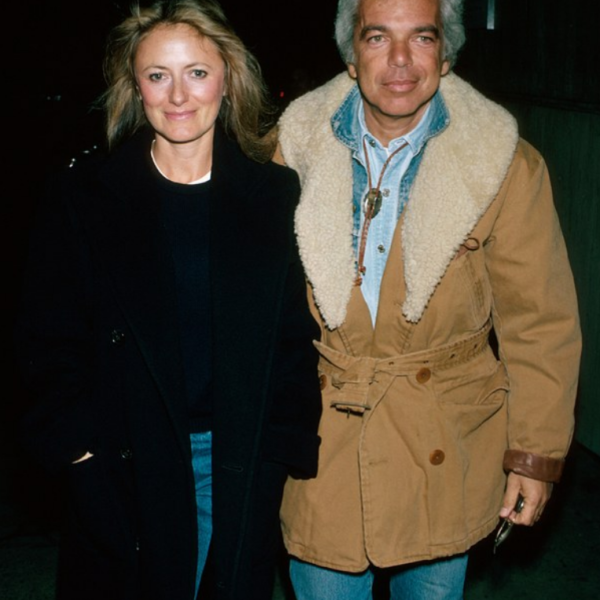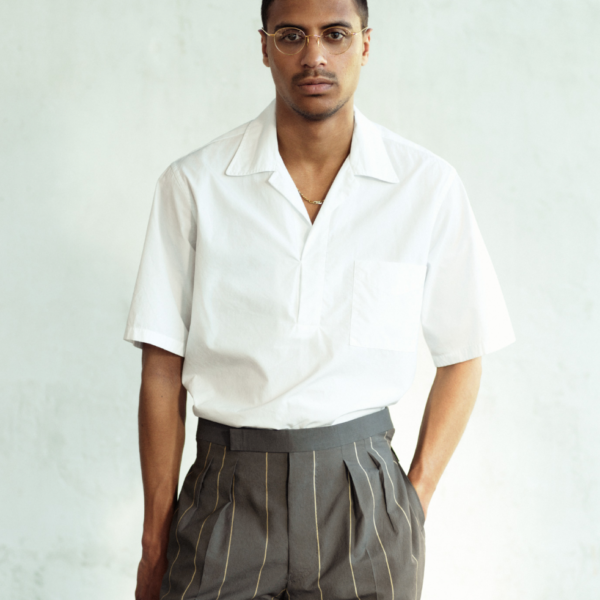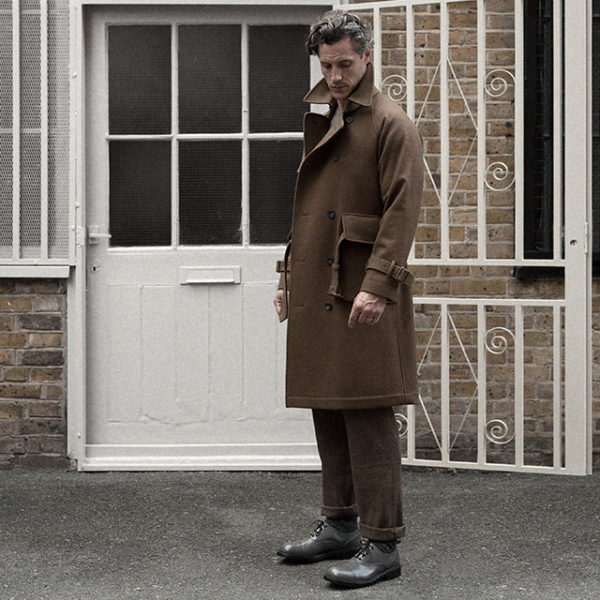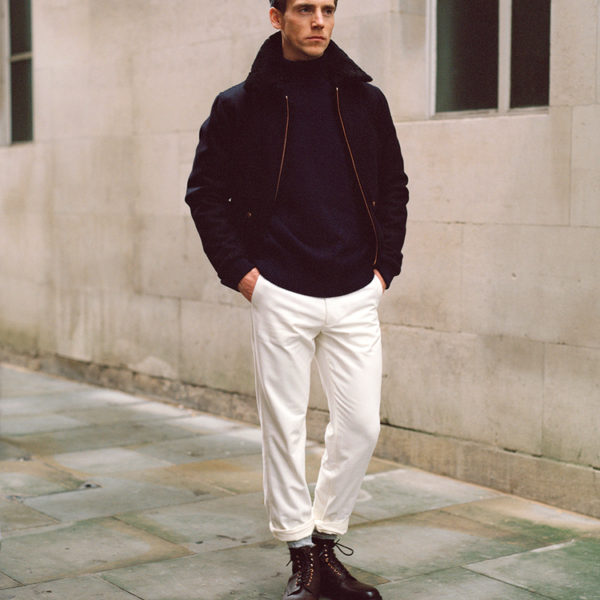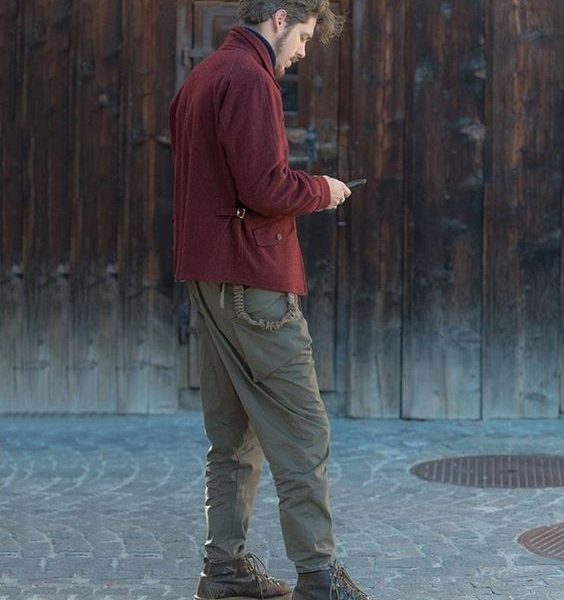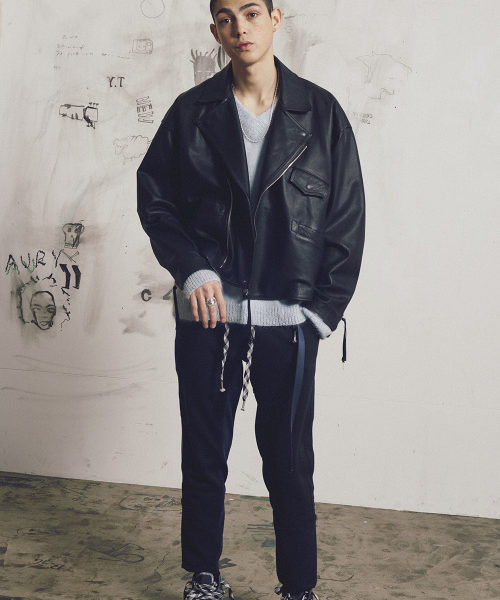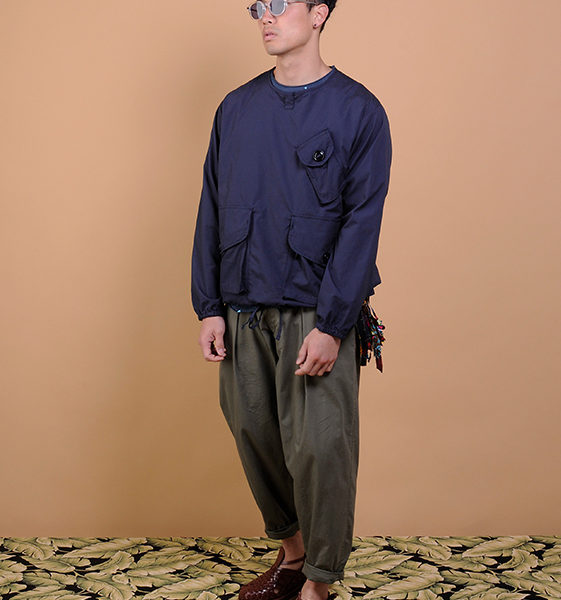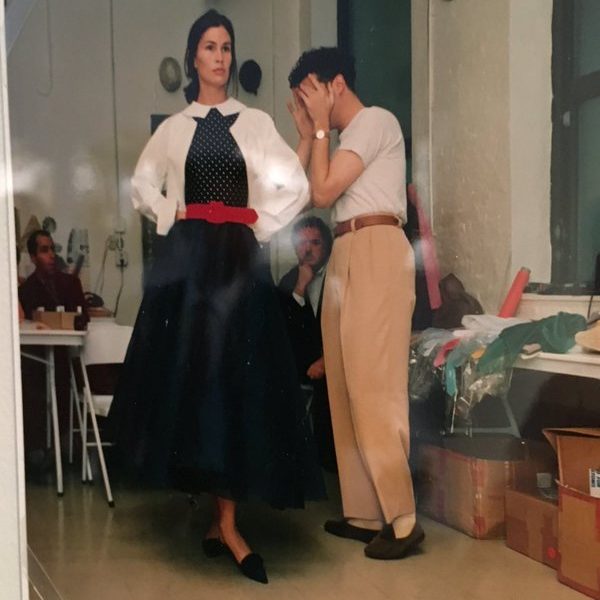
You’ve probably read the phrase “fit is king,” but the truth is, fit is just the starting point — what really makes an outfit is its silhouette. The two concepts aren’t totally distinct, the lines between fit and silhouette are blurry. Generally speaking, however, a silhouette is the outline of your clothes once you take away all the details. Silhouettes are a way we can use clothes to give the illusion of a new body type, either slimming or augmenting our bodies, making them look more flattering or stylish in shape and proportion. And this is the most important dimension for whether something actually looks good on you.
Silhouette is even more important in casualwear since the parameters for fit are less well defined than they are in traditional tailoring. With a suit jacket or sport coat, you can tell if something is off when the collar floats away from the neck, the lapels buckle from the chest, or the buttoning point pulls when fastened. This is still somewhat true for casualwear, but the margin for error is much bigger and you have a lot more leeway in terms of interpreting a look.
Here are some ways to judge a silhouette in casualwear, starting with its basic forms, then moving to more in-depth principles. Note, when discussing silhouettes here, we’re talking about something distinct from different style genres. You can have a heritage-inspired ensemble that fits classically, slim, or full. Same with contemporary or dark, art povera looks. This post is purely about the shape of clothes, which you can apply to any wardrobe.
Four Basic Silhouettes
Let’s start with the four basic silhouettes — classic, coherent skinny, coherent full, and a mix of slim and full. These may seem obvious at first, but they help move you more in the direction of understanding an outfit more in terms of shapes and cuts, rather than fit alone.
(photo via Stoffa)

The Classic Silhouette
The classic silhouette is a middle-of-the-road cut with moderate proportions. It’s tailored without being skinny; it’s comfortable without being baggy. It’s what most people think of when they imagine something that fits well.
The point of this silhouette isn’t to recreate the lines of your body, but to flatter your build. If you’re a slim-athletic figure, that may mean something that fits a little slimmer throughout the waist, but if you’re carrying a little more weight, it means shirts that fit a little fuller. It’s about shoulder seams that sit at shoulder joints; jackets that don’t pull at the midsection. Trousers that give you balanced proportions, often cut with slim to no break.
This silhouette is always within throwing distance of whatever’s fashionable at the moment, even if it’s not on trend. And while nothing in fashion is truly timeless, this is about the closest thing you can get to a classic look. This is the only silhouette that will suit everyone, regardless of body type. On the downside, it can at times also look a bit generic or boring.
(photos via J. Crew, Drake’s, Jason Jules, The Jewelry Editor, AMI Paris, Mark Cho, The Armoury, Jake Grantham, and Voxsartoria)
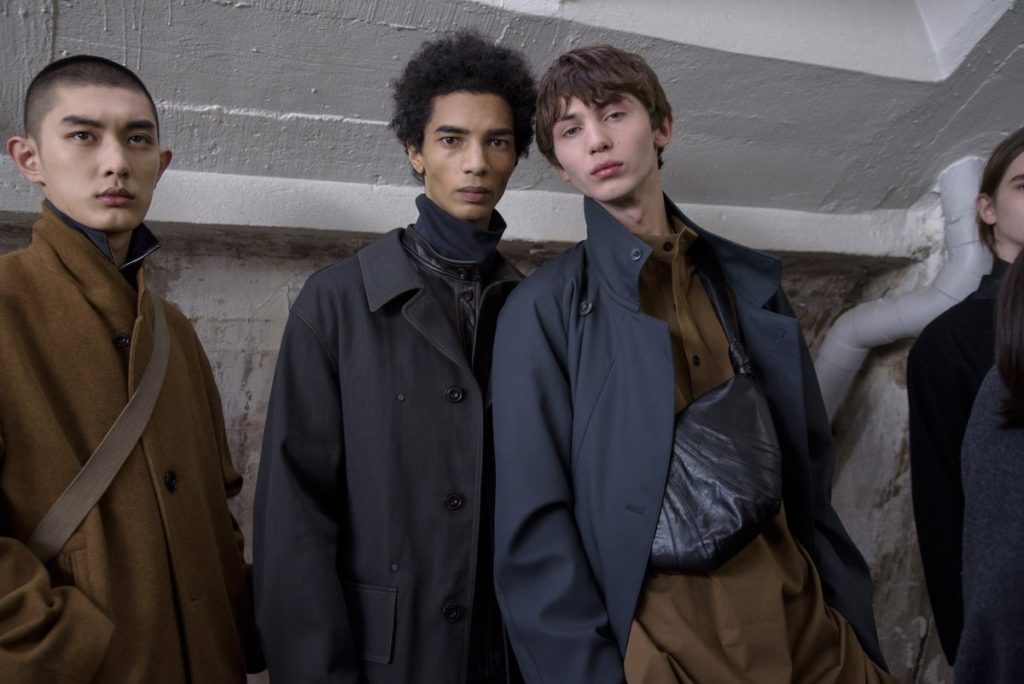
Coherently Slim or Full Silhouettes
From the classic silhouette, you have things that are coherently slimmer or fuller. Designers such as Hedi Slimane and Raf Simons have done a lot in terms of swinging the pendulum towards the further ends of these extremes, but you can take a slightly more moderate approach. These days, J. Crew, Club Monaco, and Todd Snyder are great starting places for guys looking to build a basic casual wardrobe, and almost everything at these places is slim-fit.
A coherent version of this look is to stick with the same proportions. A slimmed-up bomber jacket or 3/4ths length topcoat can be great with slim jeans or trousers. A slightly fuller parka goes well with more classically cut, military-style chinos and heavy boots. But once you stray from the tried-and-true classic silhouette, be honest about how you look. Overly slim clothes can sometimes give you an unflattering pear shape or lanky proportions. Fuller cut clothes can make you look heavy or sloppy. Some of these look better on runway models than everyday people. But when done well, these can also look a little more interesting and expressive than your basic classic cut.
(photos via Lemaire, GQ, Esquire, Club Monaco, George Wang, Saint Laurent, Elle, Nigel Caborun, and Voxsartoria)

The Mixed Silhouette
It’s also possible to mix things up, pairing slimmer tops with fuller trousers. I find, however, that is usually easier to go the other way around — fuller, baggier coats or jackets with slim trousers. Clothes don’t have to always flatter the figure, but these sorts of combos play well into classic masculine archetypes, which usually revolve around athletic bodies. Consider something like an oversized Balmacaan topcoat or duffle with slim trousers. Or a big, rounded bomber with slim jeans. It’s easier to go top-heavy than bottom-heavy.
When you mix things up like this, you can give the impression of a slimmer figure without actually wearing slim clothes. For example, you can hide a gut under a fuller-cut sweater or coat, but then give the impression of a slimmer torso by pairing the baggier top with slim trousers. Similarly, a slimmer top will make a fuller-cut pair of pants look more intentional than sloppy.
Key point: Once you stray from the classic silhouette, it’s important to pay attention to how a slimmer or fuller cut can either give the impression of a slimmer or larger figure. An overly slim shirt can make you torso look like sausage casing; an overly full shirt can make you look larger than you are. You can mitigate this by either playing a bit more with contrasting silhouettes, mixing slim-fits with fuller-cuts, or by moderating how far you go towards either extreme.
(photos via Kaptain Sunshine, GQ, Esquire, Jan-Jan Van Essche, Margaret Howell, Context Clothing, Deveaux, Mango, Dries Van Noten, Voxsartoria, and The Sartorialist)
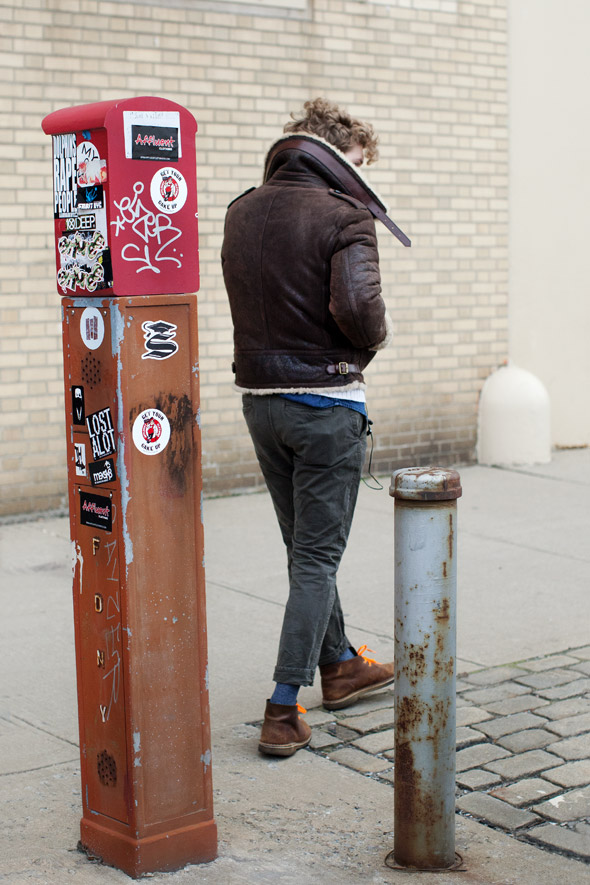
Principle One: Pay Attention to Horizontal Lines
Once you get a handle of when something looks too slim or loose on you, the next step is to pay attention to where horizontal lines are segmenting your body. These lines can either break your outfit into blocks, helping to create more visual interest, or they can make an outfit look more flattering. There are several dimensions here:
Waistline: Unlike with suit jackets and sport coats, you can’t easily nip the waist on casualwear, so think about how you can create a horizontal line closer to your actual waist. This can be as simple as having a drawstring cord or belt on a piece of outerwear (e.g. safari jackets, cotton motorcycle jackets, or parkas). A loosely hanging belt can give the impression of a defined waist even when it’s not cinched up.
You can also define the waist by wearing higher rise trousers and tucking in your shirt. Designers such as Christophe Lemaire and Patrick Grant, who are known for their fuller and more experimental cuts, often do this for their lookbook and runway presentations. By putting their models in higher-waisted trousers and tucking in their shirts, they create a defined waistline on what would otherwise be an overly shapeless and billowy outfit. You can see the same effect in the gallery above, where the Camoshita model is wearing a very loosely cut white top and grey striped trousers.
Hemlines: There’s an old adage about how suit jackets should cover your butt, but the reality is a little more complicated. Suit jackets should roughly bisect you halfway from your collar to the floor, which will give you more classic proportions. It’s possible to play a bit with this formula (Italian tailors often cut sport coats a little shorter to make them look sportier), but it’s good to understand why the rule exists in the first place.
Casualwear is similar. You can also play with different hemlines to create more interesting visual effects — longer coats, longer shirts, and even longer sleeves. I often wear overly long sleeves with my Margiela five-zip to accentuate the jacket’s vertical lines. A shorter jacket, such as the brown Stoffa bomber pictured at the very top of this post, can also elongate your leg line. Pay attention to where hemlines fall.

Layering Different Hemlines: Conventionally, the layer that’s closest to your skin is usually the shortest; the outermost layer is the longest. But you can stratify your hemlines in a more interesting manner by wearing different lengths — a long shirt that’s slightly shorter than the coat, with a mid-length jacket sandwiched between the two layers. In the photo above, Daniel Day-Lewis does the same thing with a shorter, textured sweater and striped Breton peeking out from underneath.
Cropped Trousers or Stacked Jeans: Cropped trousers can be a good way to play with proportions or show off your shoes (which can be especially nice with taller boots). Similarly, you can stack the leg line of skinny jeans to create horizontal lines going across the bottom of a more casual ensemble. It’s also possible to wear overly long, fuller cut pants, such that extra fabric puddles around your ankles, but doing so takes tremendous skill so you don’t look like you’re just wearing ill-fitting clothes. On baggier pants, I find it’s usually easier to wear them with no break or slightly cropped.
Simple Changes: The above is more about cut, but you can break an outfit into blocks by just paying attention to where things change in terms of color, texture, material, and even shape. In the gallery above, you can see how each outfit is stratified in different ways using all of these techniques — transitions between actual items, belts and drawcords, layering different hemlines, cropped trousers, etc. Think about how horizontal lines are segmenting your outfit into blocks, creating visual interest, and helping you achieve more flattering proportions.
(photos via The Sartorialist, United Arrows, Rais, Haven, Borasification, End Clothing, Ralph Lauren, Camoshita, Deveaux, Evan Kinori, GQ, S.E.H. Kelly, and W Magazine)
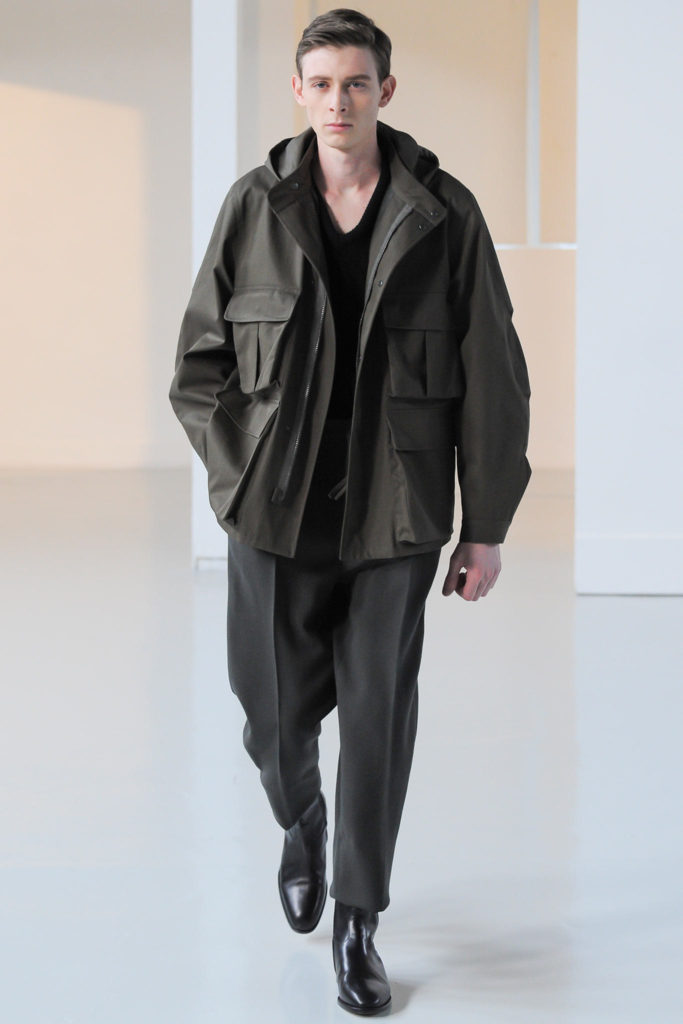
Principle Two: Think About Shapes
One of the key takeaways from our post about tailored silhouettes is how suits and sport coat outfits come in an alphabet of shapes: As, Xs, Ys, and columnar Is. This is defined by the cut of a jacket’s shoulders, waist, skirt, and quarters.
Casualwear is similar. For the last two decades, most casual silhouettes have been columnar and skinny — a slim top worn with slim trousers. But in the last few years, much more interesting silhouettes have seeped into the mainstream. And some of the principles here aren’t too different from what one might see in traditional men’s tailoring.
For example, Liverano & Liverano’s rounded sport coats and slim trousers aren’t too different from the “circle on a stick” look that’s created when someone wears a rounded bomber with slim, tapered jeans. Both are aimed at achieving a more masculine and athletic silhouette, but one that also looks relaxed and relatively casual. The photo above from Lemaire’s runway presentation shows something similar, but you don’t have to take things so extreme. Ralph Lauren’s military-inspired field jackets often have a faint echoes of that same rounded silhouette. Some brands slim up those same field jackets so they look a bit more tailored, but in doing so, they also don’t look as casual or relaxed. Sometimes a slightly dropped shoulder seam can make all the difference.
For casualwear, think about the roundness or blockiness of a coat; the taper and volume of trousers; the slouchiness of certain items; and whether your outfit relies more on sharp lines or softer corners. It’s easier to create unique shapes with tailored clothing since suit jackets and sport coats are built up from multiple layers of haircloth, canvas and padding. Casualwear, on the other hand, is usually only made with shell fabric, but designers can still use seams and darts to add shape and volume.
(photos via Lemaire, Private White VC, Grenfell, Thousand Yard Style, YSTRDY’S TMRRW, Unionmade, No Man Walks Alone, and Jacob Gallagher)
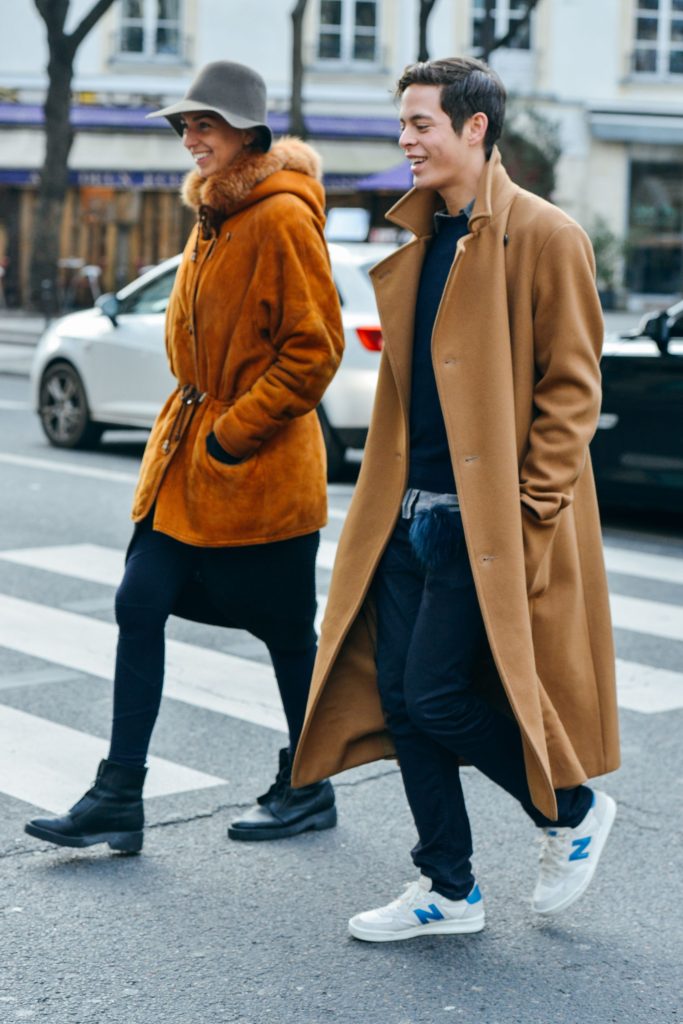
Principle Three: Consider Proportions
Finally think about the proportions of your outfit — the focal points, visual weights, and how things are coming together to form a new body type.
Focal Points: Not all outfits need a focal point, but if you’ve created one, it’s good to pay attention to whether it makes an outfit look balanced. In a classic suit or sport coat ensemble, the focal point is usually your shirt, tie, and jacket combination, which creates a V on your chest. You don’t have the same formula for casualwear, but you can create a focal point with some kind of visually dominant item. This can be done through an item’s complexity (e.g. a shearling bomber with straps); color (e.g. a bright tan topcoat thrown over an darker ensemble); or texture (e.g. a fuzzy mohair or unusual boucle sweater). Be careful of focal points that are in unexpected places. There aren’t any real rules to casualwear, but a pair of bright green boots in an otherwise all-blue outfit can look jarring because the eye isn’t used to being drawn downward.
Visual Weights: A classic silhouette is always a down-the-middle cut, but once you start playing with the shape, cut, and volume of certain items, you’re changing their visual weight. And as such, it’s good to pay attention to whether things are coming together in a way that looks balanced. Very full trousers, for example, can sometimes scream out for visually heavier looking boots — a double soled, chunky lace-up, for example. At the same time, you can also wear visually lightweight items to bring attention to a heavier item (for the sake of contrast). Just be careful again of whether you’re now creating a new focal point that subverts the eye. Very broadly speaking, it’s usually easier to have focal points at the top half of an outfit (although, again, this is far from a hard rule).
Creating a New Body Type: Like with anything dealing in aesthetics, the idealized male body type has gone through trends. During the workout craze of the 1980s, the ideal male form in the US was something like Arnold Schwarzenegger. You can see this reflected in the zoot-suit proportions of brands such as Armani, which had lowered buttoning points, extended shoulders, draped chests, and a cut that almost looked like it was blooming from the waist. More recently, fashion has celebrated much slimmer and almost waif-like proportions, starting in the late ’90s and late-aughts with designers such as Hedi Slimane, Raf Simons, and Thom Browne (who all championed almost boy-like proportions).
The classic silhouette, however is classic Western male figure is embodied in DaVinci’s Vitruvian Man. It’s a slim-athletic body with shoulders that are broader than the waist. This is the same template for much of classic men’s tailoring.
The point of clothes isn’t about recreating that Vitruvian figure (it would be impossible in casualwear anyway, unless you actually have that body type). But it’s good to keep classical male forms in mind when playing around with different silhouettes. This can be that middle-of-the-road Vitruvian figure, it can be the built-up “circle on a stick” athletic figure, or it can be slimmer, waif like figure. Again, much of this will depend on your own body type, but there’s room to play here at the margins if you know how to judge a silhouette. If you want to look slimmer, sometimes an oversized coat with slightly extended shoulders, worn with slim jeans and a loose sweater, can be the most flattering thing you can put on.
(photo via Tommy Ton)
